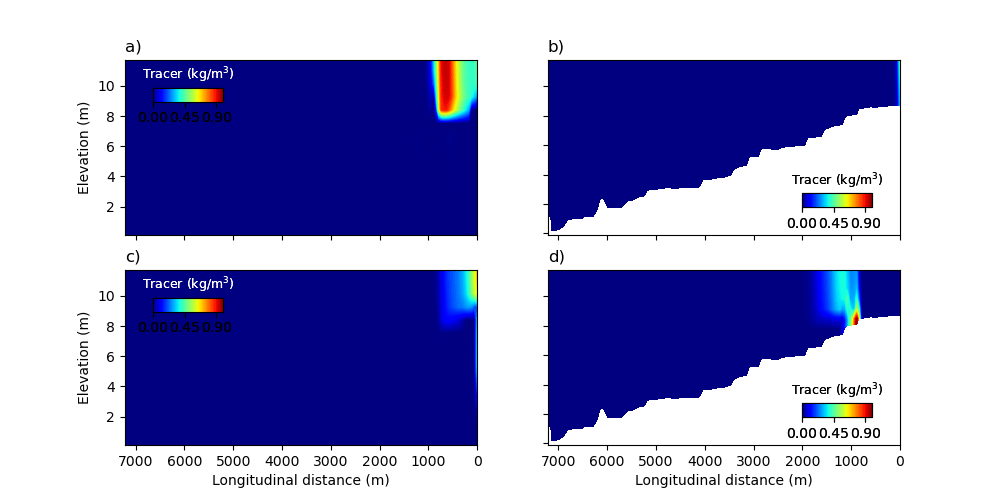Transport and mixing induced by internal seiche destabilization on sloping bathymetry
Water movements and vertical mixing in lakes and reservoirs are often caused by internal seiches, which are wind-induced basin-scale oscillations in density-stratified water bodies. The generation of internal seiches and their effects on vertical mixing are often assessed for idealized (rectangular) basin geometries (Spigel and Imberger, 1980; J. Phys. Oceanogr.).
We analyzed the transport and mixing induced by sloping beds by simulating tracer dispersion during and after a wind event for a rectangular-shaped basin (Fig.1a-c) and for basins with gently sloping beds (Fig.1b-d), typical for dendritic reservoirs, using a three-dimensional hydrodynamic model. This study has been presented at 37th SIL (de Carvalho Bueno et al., 2024; SIL.) and the presentation can be downloaded here
Steep slopes caused persistent vertical movement induced by internal wave activity, transporting substances and organisms that live in this region from bottom to surface (Fig.1c).
Horizontal transport near the thermocline occurred primarily after the end of the wind event, as a result of the evolution of the internal seiche.
More gentle slopes lead to a destabilization of the internal seiche and strongly increased the mixing process at the thermocline due to the wave breaking (Fig.1d). Contrarily, the transport and mixing of tracer in the surface water was reduced in basins with sloping bed (Fig.1b).
Our results underline the importance of bathymetry on vertical mixing and horizontal transport induced by internal seiches. The distinct responses of reservoir-shaped water bodies to wind-induced upwelling are expected to have import implications for the transport of nutrients, chemicals and organisms, which are not accounted for in assessments and simulations based on an idealized basin geometry.
